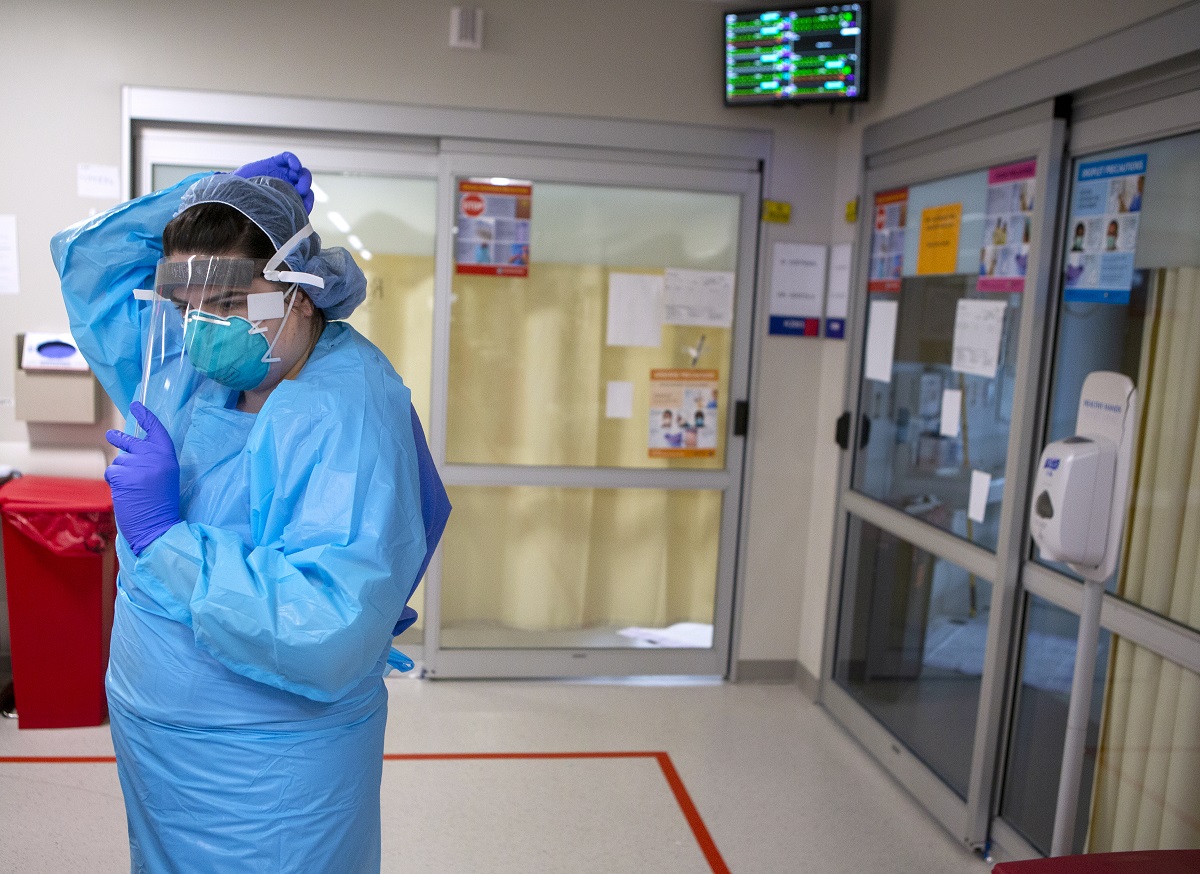COVID-19 and the emergency department: When preparation becomes reality

Dr. Steven Allen, program director of General Surgery Residency, had studied the videos and participated in the training for donning and removing personal protective equipment (PPE). But when all that practice and preparation became reality in early April, even this seasoned provider was unnerved.
Allen and Rolfie Perez Holguin, a second-year surgical resident, were asked to consult with a woman who was at the Emergency Department at Hershey Medical Center following a fall at her home. Because a family member had tested positive for COVID-19, she was identified as a person under investigation for having the virus.
“I’ll be the first person to tell you that I was scared,” said Allen. “Was I going to screw up the PPE donning process as I go see this patient? Am I going to be contaminated?”
By using the buddy system, Allen and Perez Holguin were able to don their equipment properly, relying on each other as their safeguards to make sure there were no breaches in the gown, cuffs were covered, masks were on and the face shields covered the masks. Once in the room, they policed each other as to how close they got to the patient, only examining her as needed. That, said Allen, was the most difficult and unexpected part of the whole process.
“When we walked in her room covered head-to-toe in the protective gear, her eyes became the size of saucers,” said Allen. “I immediately was put in her shoes. She’s injured, she’s possibly positive for this very scary illness, and we are dressed for protection from her.
“They teach you not to stand closer than 6 feet away if at all possible,” Allen continued. “That was very hard for me. I’m normally touching patients’ shoulders, reassuring them. This was unnerving.”
Also unnerving to Allen and his resident? Removing their PPE once they had left the patient’s room. Like the descent from Everest, this final step carries the greatest risk — albeit for contamination, not falling off the mountain.
“Do not get so comfortable in this process that you get sloppy or take shortcuts,” said Allen. “That’s when you will get contaminated. The mantra with anything in surgery — ‘Do it the same way every time’ — holds true for the PPE process, too.”
Allen advised providers to “Watch the videos on Compass to refresh your minds of the processes if you need to. If you do that process correctly, you will be fine.”
The patient ended up being fine as well. Her injuries were treated, and she tested negative for COVID-19.
If you're having trouble accessing this content, or would like it in another format, please email the Penn State College of Medicine web department.
